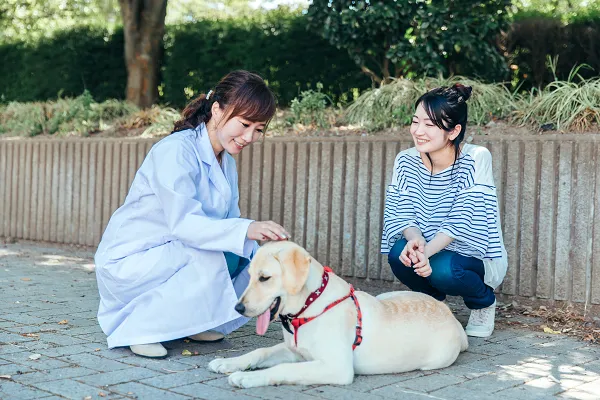Behavior Counseling: Diagnosing a Behavior Problem – Is It Medical or Behavioral?

Behavioral problems can develop for many reasons. Genetics and the environment both contribute to behavior. When problematic behaviors arise, particularly if they develop suddenly or occur in older pets, it is important to screen for underlying medical conditions. The behavioral history provides valuable information to assist in determining the root cause for any behavioral concern.
Behavior Counseling: Compulsive, Stereotypic and Displacement Disorders

Dogs and cats that experience frustration may exhibit displacement behaviors or may redirect aggression toward another target. Conflict can also trigger repetitive behaviors that appear to have no function, known as stereotypic behaviors. A compulsive disorder is diagnosed when a repetitive behavior occurs frequently enough to interfere with a pet’s quality of life.
Behavior Counseling: Complementary Treatments

There is a wide range of non-pharmaceutical products designed to improve a pet’s behavior. There is little oversight for many of these products which means that any given product may not work for your pet. Ask your veterinarian before using any over-the-counter product for your pet. The label “natural” does not guarantee a product is safe to use in dogs and cats.
Behavior Counseling: Behavior Consultations – Seeing a Veterinary Behaviorist

Many behavioral concerns reflect normal behavior and can be resolved with simple training. Other behaviors reflect behavioral abnormalities or may have underlying medical or physical causes. A veterinary behaviorist is trained to assess and treat both normal and abnormal behaviors and can identify medical conditions that can affect behavior. An accurate assessment from the start can improve the outcome.
Behavior Counseling: Aggression – Introduction

Dogs and cats use aggressive signals to communicate and can often do this without causing injury. It is important to learn to recognize subtle signals to prevent an escalation of aggression. Some aggression reflects underlying medical and behavioral illness. Any aggressive behavior in dogs and cats should be assessed to determine the cause and establish a safety protocol. Aggressive behavior in dogs and cats can lead to serious injury to people and other pets.
Barking in Dogs

Barking is a normal and natural behavior for dogs. Underlying physical and behavioral illnesses can trigger barking. Many types of barking can be prevented by ensuring your dog’s needs are met, and by using positive reinforcement to train desired behaviors. This handout provides example scenarios and sample training plans using the ABC method.
Anxiety Wraps for Dogs

With a little effort, a lot of patience, the advice of veterinary professionals, and a new anxiety wrap, you and your dog may successfully weather the storm. Take some preventive steps to help distract your dog during storms and use food or toy rewards to make the time less stressful.
Aggression in Dogs: Territorial

Territorial behavior is a normal canine behavior, though territorial aggression can result in injury to a person or animal. Many dogs that exhibit territorial aggression have an underlying fear or frustration that contributes to their level of arousal. Territorial aggression may be preventable if recognized and addressed early.
Aggression in Dogs

Aggression may be defined as any threat or harmful behavior directed toward another individual or group. Aggression in dogs commonly includes body language or threat displays such as a hard stare, growling, barking, snarling, lunging, snapping, and/or biting. There are many different categories or types of canine aggression including territorial, possessive, maternal/protective, pain-related, predatory, frustration, social conflict-related, sexual, disease-related, and fear- or anxiety-related aggression. The most common presentation of aggression is fear or anxiety motivated. The treatment of aggression will depend on the cause of aggression. Aggression should first be discussed with your veterinarian regarding the most appropriate treatment.
Loss of a Pet – Grief and Bereavement

Grief is the normal and natural response to the loss of someone or something. It is a full body experience that includes physical, emotional, cognitive, social, and spiritual responses. The best way to manage your grief is to be reassured that these reactions are normal and to let them run their natural course. Grieving takes time. Usually it gradually lessens in intensity over time, but if it doesn’t, then professional counseling may help.

